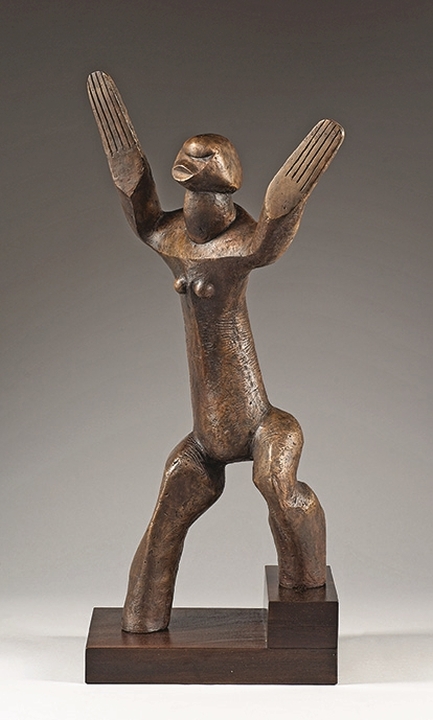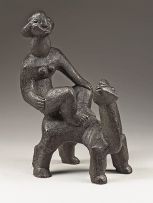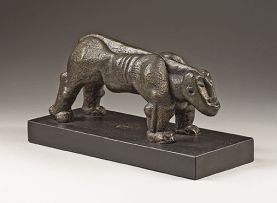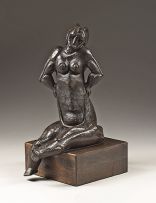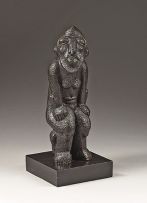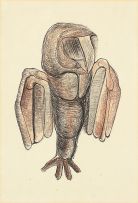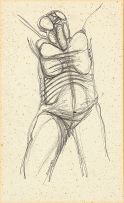Important South African and International Art
Live Auction, 10 November 2014
Harry Lits Collection
Incl. Buyer's Premium & VAT
About this Item
signed with the artist's initials and numbered I/X, executed in 1969
Notes
This tall and elementary figure, which reads as supplicant and/or celebrant, either way evoking pathos, is widely referenced in literature about Sydney Kumalo. Unusually, its earliest appearance in print is in government-backed publications. It is illustrated in South Africa: A Visual History (1973), a Department of Information book that describes Kumalo as a "well-known Black artist" whose work is "much sought-after".1 It is also illustrated in Our Art III (1978), the third in a series of books issued by the Foundation for Education, Science and Technology.2 Kumalo was the subject considerable attention, more so after he began showing internationally. In 1965, following a series of exhibitions in Italy organised by Johannesburg dealer Egon Guenther, Kumalo was included on a group show at dealer Eric Estoric's Grosvenor Gallery in London. The New York Times favourably remarked on the "powerful monumentality" of Kumalo's works on the show.3 In 1966 Kumalo was invited to represent South Africa at the Venice Biennale, underscoring an appraisal of him as South Africa's "best-known, most admired and most sought-after figurative sculptor".4 Shortly afterwards, in 1967, his bronzes received a considered appraisal in Art Voices, a short-lived New York art magazine. Kumalo's work was characterised as part of the "new synthesis in South African art", his work marked by its affinities to "wood carvings from the Cameroons and the Cubist sculpture of Juan Gris, Archipenko, Lipschitz or Zadkine".5 South Africa's expulsion from the Venice Biennale in 1968 did not end Kumalo's international career, as it did so many other artists. He continued exhibiting and generating notice. This important work is illustrated in art historian Benedict Donahue's The Cultural Arts of Africa, in which she remarks on the "kangaroo pose" and "cubistic style" of Kumalo's figure.6 Fittingly, it is also illustrated in Elza Miles's 2004 history of Polly Street.7
1 - (1973) South Africa: A Visual History, Pretoria: Department of Information. Page 151.
2 Watter, Lola (1978) 'Sydney Kumalo', Our Art III, Pretoria: Lantern. Page 73.
3 Spencer, Charles (1965) 'Africans exhibit in London', New York Times, 28 September. Page 5.
4 - (1965) 'Art under apartheid' New York Times Magazine, 28 March. No page.
5 - (1966) 'Art Around the World', Art Voices, Vol. 5(2), Winter. Page 97.
6 Benedict Donahue (1979) The Cultural Arts of Africa, Washington: University Press of America. Page 231.
7 Miles, Elza (2004) Polly Street: The Story of an Art Centre, Johannesburg: Ampersand Foundation. Page 2.
Literature
Toerien, Heine and Duby, George. (1970-9) Our Art 3, Pretoria:The Foundation for Education, Science and Technology. Another example from the edition illustrated on page 73.
Miles, Elza. (2004) Polly Street: The Story of an Art Centre, Johannesburg: Ampersand Foundation. Another example from the edition illustrated on the frontis.
